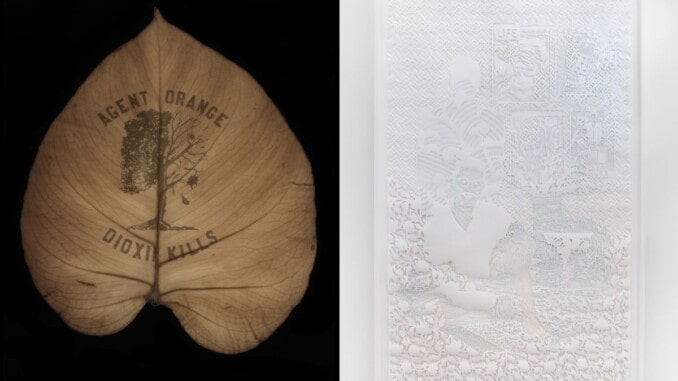
The Wende Museum’s current exhibition, Vietnam in Transition, 1976–Present, explores the intersections of Vietnamese art and history since the end of the “American War” and national reunification. Today we are spotlighting two of the remarkable artists from the Vietnamese diaspora featured in this exhibition: Binh Danh and Antonius-Tín Bui.
Binh Danh, born in a Southern Vietnamese fishing village, creates innovative art using the chlorophyll printing process. Photographic images are embedded in leaves through photosynthesis, then cast in resin. The leaves express the continuum of war and contain the residue of colonialism and imperialism. The artist’s work reminds us that, just as matter is neither created nor destroyed but only transformed, the remnants of the war live on forever in the landscape.
Antonius-Tín Bui reflects on kinship within queer Asian American communities. Their hand-cut paper portraits are made from white Joss paper, which is associated with death in Vietnamese culture. Bui’s intricate paper-cutting process carves out space for narratives often omitted from whitewashed histories. As Bui describes it, “When working on my hand-cut paper portraits, I compare each slice to a line break within a poem, an opportunity to breathe into the next idea. Together every inhale and exhale materializes into a body of textual flesh, one that can be read in infinite ways.”
See Vietnam in Transition, 1976–Present for yourself and witness the powerful artistic expressions of a nation in change. We are open Friday, Saturday and Sunday, 10 a.m. to 5 p.m. RSVP for one of our free tours at /www.eventbrite.com/e/wende-museum-tours.
Graphic –Left: Binh Danh, Dioxin Kills, Immortality: The Remnants of the Vietnam and American War, 2008Courtesy of the artist
.


